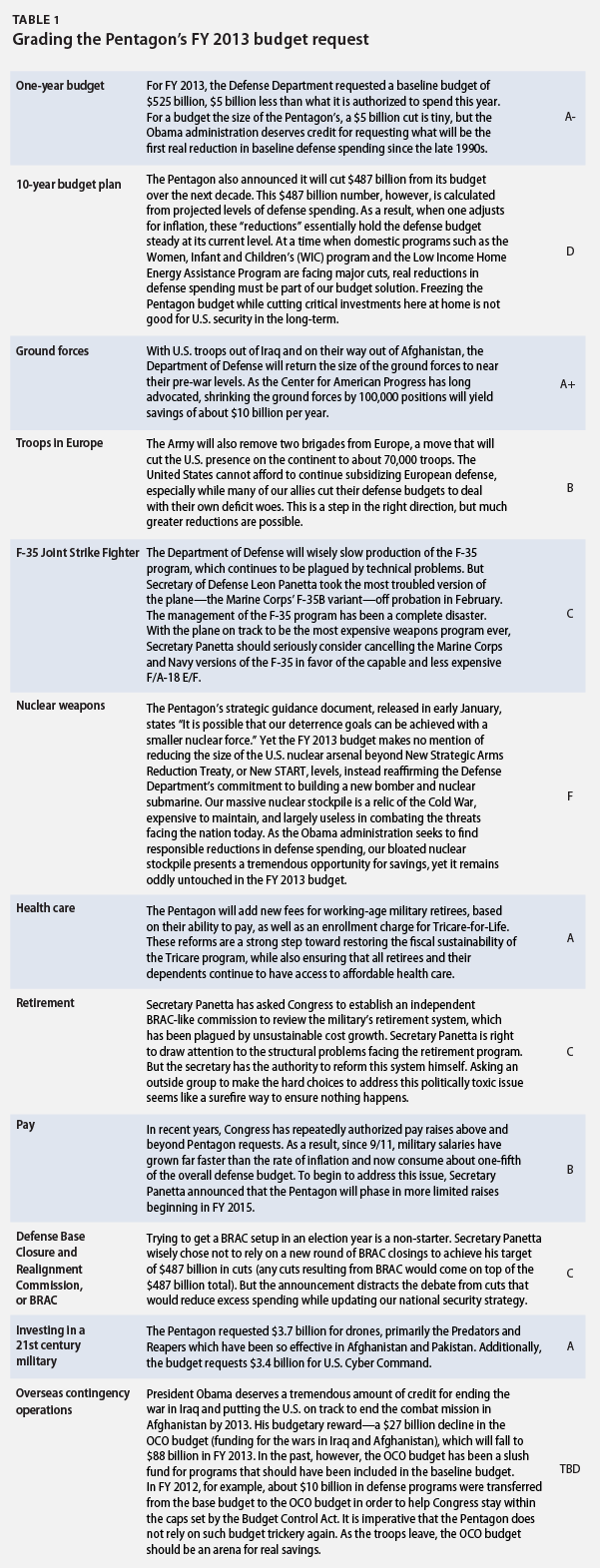Washington, D.C.–(ENEWSPF)–February 14, 2012. The Obama administration’s fiscal year 2013 defense budget halts the unrestrained growth in baseline military spending that has occurred over the last decade, but “The Fiscal Year 2013 Defense Budget: A Report Card,” released by the Center for American Progress yesterday, shows it does little to bring the baseline budget back down from its current level, which remains near historic highs. In addition to grading the proposed cuts, this column also recommends bipartisan defense cuts including reducing F-35 procurement, cancelling the V-22, shrinking the size of the nuclear arsenal, reducing the carrier fleet from 11 to 9, and reducing the procurement of the Littoral Combat Ship.
If passed by Congress, the proposal would authorize $525.4 billion for the Pentagon’s base budget for the fiscal year beginning in October, a $5.2 billion or 1 percent reduction from this year’s spending level. The proposed budget recognizes that we can no longer afford the runaway growth in defense spending that has occurred since 1998.
Achieving the first real reduction in military spending in more than a decade is a welcome and major achievement. We applaud the administration for using the fiscal pressures facing the Pentagon to realign military priorities to reflect 21st century threats. And while we are encouraged by the $487 billion the Pentagon says it will cut over the next decade, much more work remains to be done. This plan still avoids many of the hard choices facing the Pentagon—on weapons systems, personnel benefits, and nuclear weapons, to name but a few.
The Obama administration has taken a small step toward a sustainable military stance with its latest defense budget. But throughout the debate surrounding the president’s budget request it will be important to remember one fundamental reality: This country needs a comprehensive budget agreement. In order to restore our fiscal health, we need investment in research and development, infrastructure, education, and a jobs bill. These domestic issues are the most pressing national security challenges facing the country. The Department of Defense budget cannot and should not be formulated in a vacuum, without regard to domestic priorities. Keeping this in mind, here are the marks we’re giving the U.S. Defense Department’s budget request:

President Obama and Defense Secretary Leon Panetta have done well to regain control of defense spending in their FY 2013 budget plan. The budget halts the massive growth of the defense budget since 2001, holding the budget stable in inflation-adjusted terms. Moreover, the administration has used the fiscal pressure facing the Pentagon as an opportunity to achieve a much-needed update to U.S. security strategy, moving the U.S. military away from Cold War tactics toward an agile and sustainable posture focused on protecting U.S. interests in the 21st century. Nevertheless, much work remains to be done, and the FY 2013 budget leaves a number of underperforming, outdated, or unsustainable programs untouched. Excess defense spending does not make our country safer—it adds to our debt and diverts resources away from key investments here at home.
To read the full column, click here.
Source: americanprogress.org








